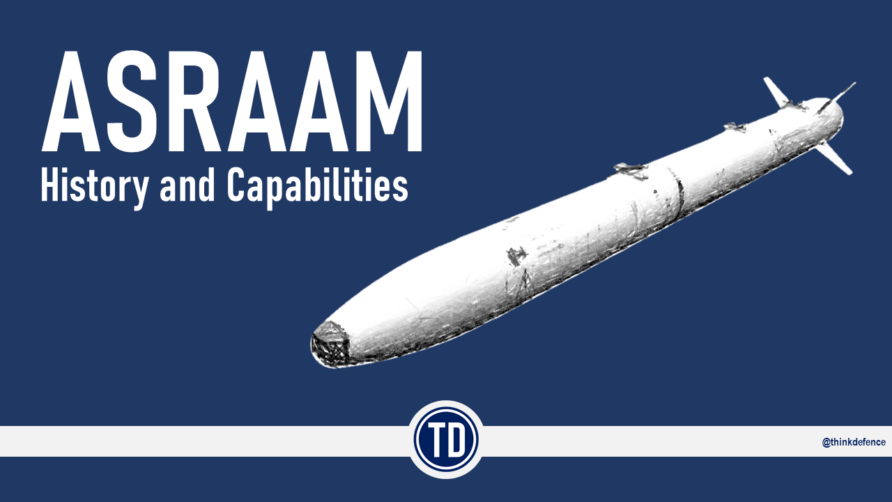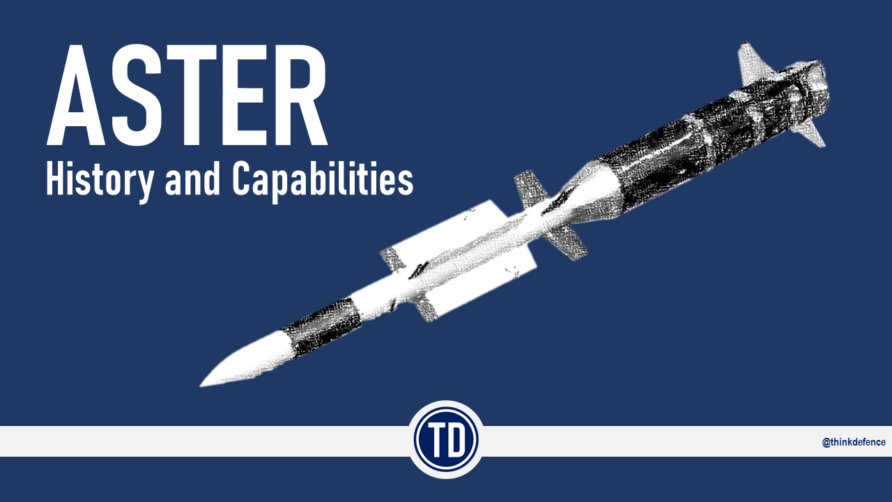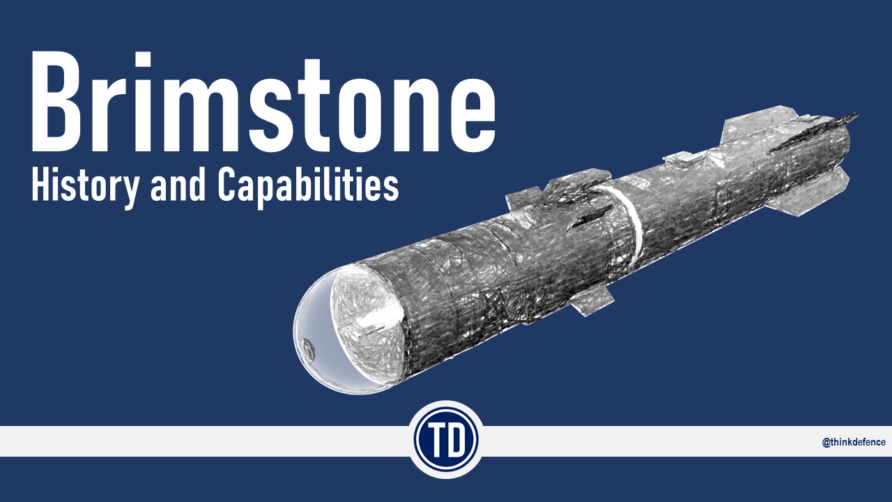Paveway IV is a highly accurate precision-guided bomb carried by the RAF Typhoon, F-35B, and Protector RPAS.
The RAF describes the 225 kg Paveway IV as;
This advanced and highly accurate weapon is a state-of-the-art precision guided bomb. Equipped with the latest Global Positioning Guidance technology, Paveway IV is a low-cost, all-weather, 24-hour precision bomb capable of destroying the majority of general purpose targets while significantly minimising collateral damage.
It was integrated with Tornado, is integrated Typhoon and F-35B, and will be integrated into UK’s Protector RPAS.
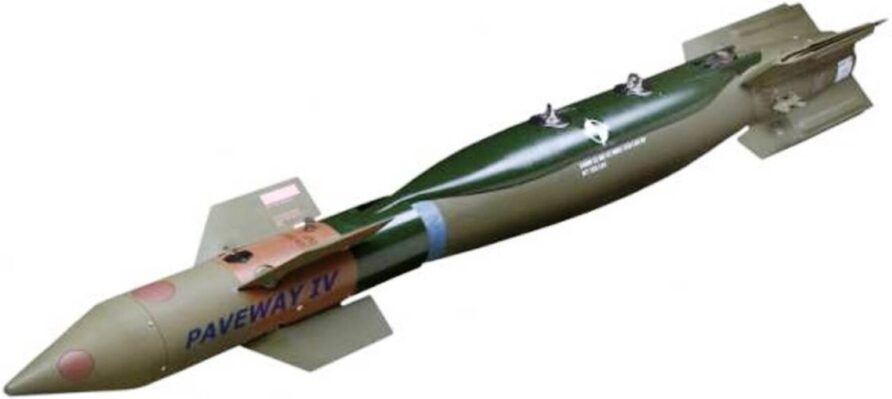
Paveway IV History
NATO air operations in the Balkans during the nineties had shown how existing precision tactics were frustrated by bad weather and deliberate obscurants. A MoD report concluded that only 40% of the weapons dropped by RAF Tornado and Harrier aircraft hit their targets.
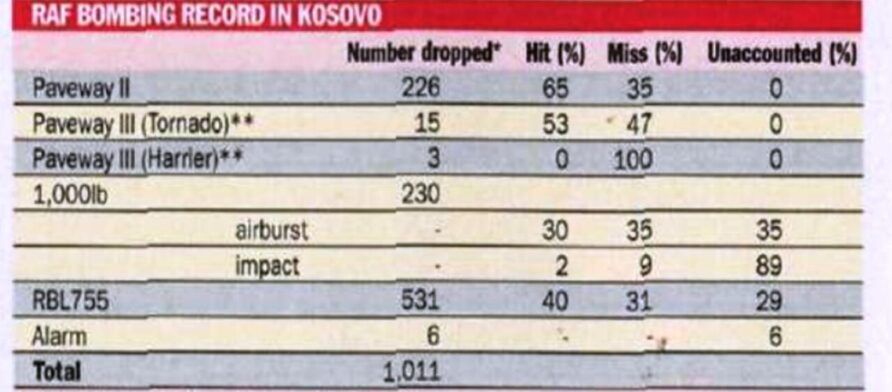
Much greater precision and control were needed, especially in poor weather conditions that limited laser designation.
The MoD invited expressions of interest for the new Precision Guided Bomb requirement in 2001.
Alenia Marconi Systems (AMS) teamed with Boeing and proposed the JDAM with Diamondback wing kit, Elbit Systems development of their Lizard system, Leigh Aerosystems with Long Shot, Raytheon with Paveway and SAGEM with their AASM.
The MoD shortlisted Alenia Marconi Systems (by then, MBDA) and Raytheon in 2002.
Raytheon Systems Ltd won the contract in June 2003, beating MBDA which had entered the Boeing JDAM. ISD was planned to be in 2007.
Paveway IV included a control and guidance system derived from work done by Raytheon for the USAF. In their bid, Raytheon emphasised the commonality advantages with other in-service weapons.
The evolution of Paveway IV from Paveway II is shown below.
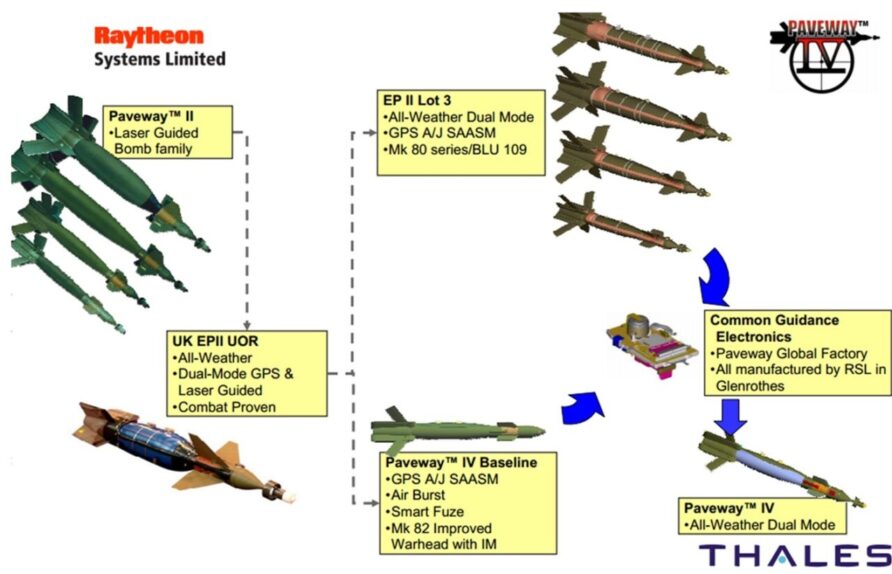
Although approval was gained for integration on Harrier, Tornado and Typhoon, funding constraints meant only Harrier integration contracts were let. During the development, the Paveway IV Baseline was improved with laser guidance capability as evolved from Enhanced Paveway II Lot 3.
The Approved Cost at Main Gate was £363 million, including integration with Harrier GR.9. Agreed manufacture quantities at Main Gate were 2,303.
The in-service Definition was;
Delivery of 96 weapons, the modification of 12 aircraft of one aircraft type, sufficient trained air and ground crew, all necessary support and a cleared Operational Flight Programme.
After the development and assessment phase had been completed, Paveway IV entered service with the RAF in 2008, having met all KURs
- The Over The Target Requirement (OTR) shall be no greater than that which can be achieved using Mk 82 bombs delivered with 15m Circular Error Probable (CEP).
- The user shall be able to achieve the OTR in all weather.
- The user shall be able to achieve the OTR 24 hours a day
- The user shall be able to programme the weapon with new target coordinates in the air before release.
- The user shall be able to deliver PGBs from Tornado GR4/4A, Harrier GR9/9A, and Typhoon.
- The user shall be able to achieve the effect at the target without causing greater damage to collateral objects than would be created by an Mk 82 bomb delivered within a CEP of 15m.
- The user shall be able to employ the weapon from Harrier GR9/9A on embarked operations from an Invincible Class Aircraft Carrier (CVS).
- The weapon shall have a 75% probability of successfully completing a mission at any stage during its life
From then, it was used operationally in Afghanistan by Joint Force Harrier.
Paveway IV and Harrier GR.9
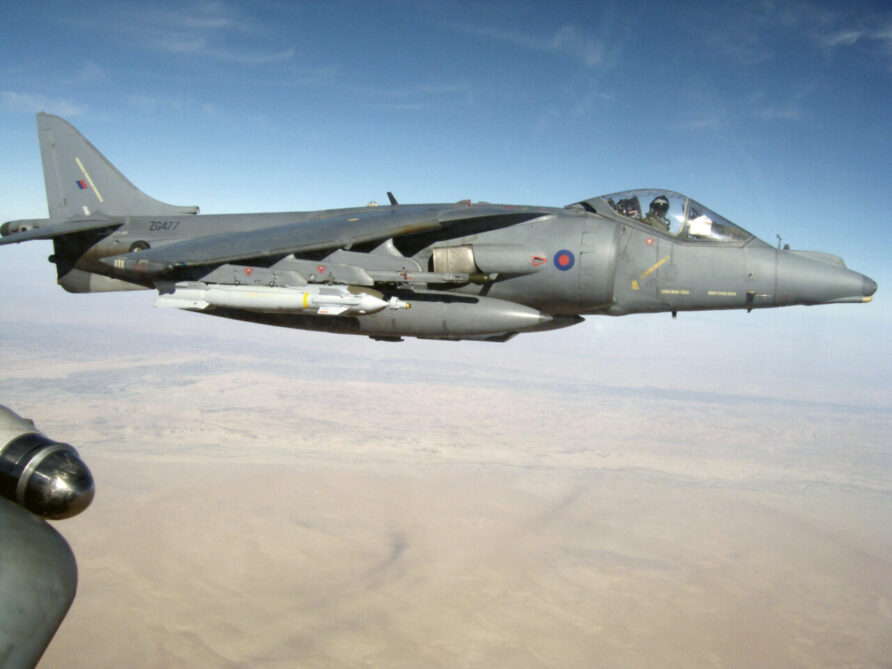
Paveway IV Re-Target
Joint Force Harrier was relieved by RAF Tornado in June 2009 and by then, Paveway IV integration had been completed on Tornado.
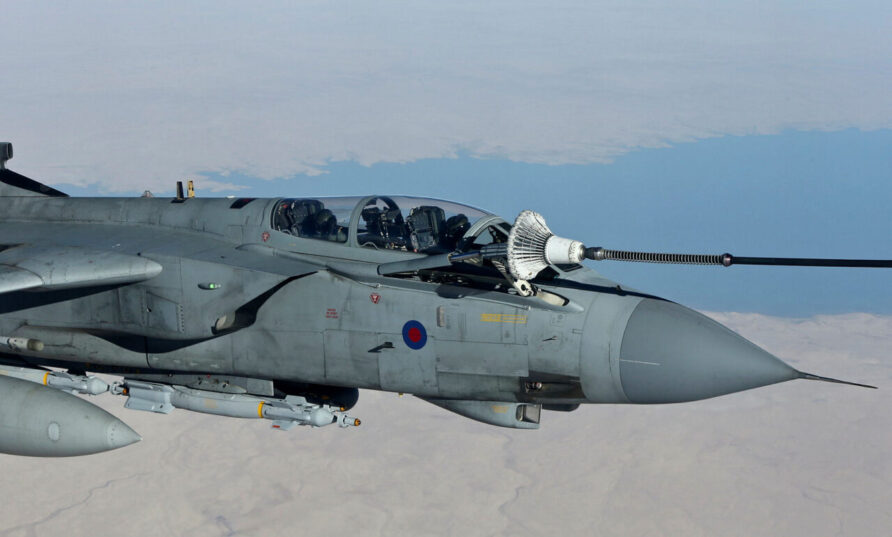
MBDA and QinetiQ conducted trials of a penetrating warhead in a technology demonstrator contract funded by the UK and France in 2010. Although the airframe was representative of a Storm Shadow/SCALP, it was reported the technology will be pulled through onto other programmes.
A live precursor charge was detonated just in front of the massive concrete target and the inert follow-through bomb [FTB] penetrated through and exited the rear face of the target. The MBDA team has now twice successfully demonstrated the performance of this new warhead design by perforation of massive concrete targets, together with successful recovery of the inert FTB and ruggedised electronic inline fuze.
The design was called the Hard and Deeply Buried Target Next-Generation Multiple Warhead System, or HARDBUT.
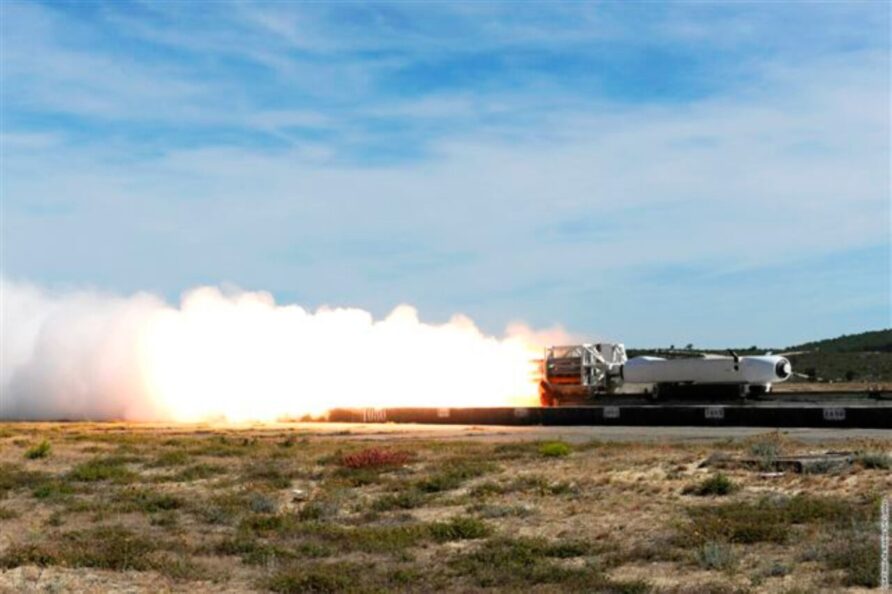
Operational ELLAMY (Libya) saw multiple uses of Paveway IV from RAF Tornado aircraft.
A further batch of Paveway IV was ordered in 2012, worth £25 million.
By 2013, the UK had dropped over one thousand Paveway IV’s and the previously planned improvement roadmap was beginning to be explored further. SPEAR Capability 1 described three potential improvements; low collateral damage warhead, penetrating warhead and improvements to the existing laser seeker to allow a wider engagement envelope.
A £2.13 million contract was awarded in 2013 to Thales for an Insensitive Munition booster for the Paveway IV’s Aurora fuze. In 2014, the MoD confirmed the cost of a single Paveway IV was £70k

The first drop of a Paveway IV by a Typhoon was conducted by 1 (Fighter) Squadron in November 2014 at the Cape Wrath range.
Paveway IV Typhoon
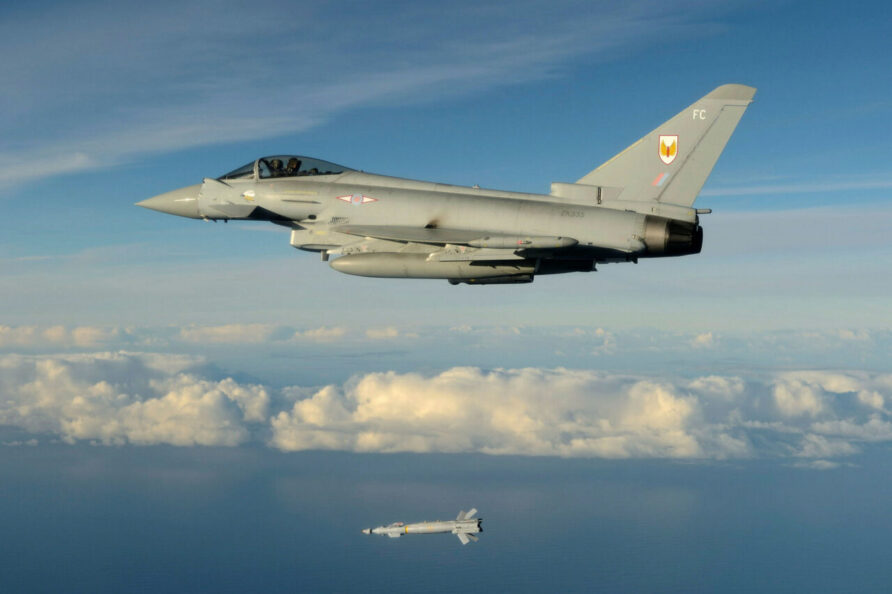
Paveway IV Typhoon Video
Raytheon announced the first (and long-delayed by US objections) export of Paveway IV to Saudi Arabia in 2014. The contract was reported to be approximately £150 million for 2,400 units, in the order of £62k each. The order will sustain production at the Raytheon Glenrothes facility for at least two years. Soon after, Raytheon announced the 4,000th delivery of Paveway IV to the RAF.
The low collateral programme achieved an important milestone with a trial detonation of the warhead, the improved guidance software for better-attacking moving targets was also flight trialled. In November 2014, RAF Tornado was withdrawn from Afghanistan.
The P1Eb Typhoon enhancement package included integration of Paveway IV and other improvements onto Tranche 2 aircraft. This was completed for a six-wing pylon carriage through the full flight envelope. This work also included requalification for more demanding flight envelopes on the Tornado.
Another replenishment contract was announced in July 2015, this time for £40 million
The Secretary of State for Defence (the Authority) acting through the International Guns, Missiles and Rockets Project Team of Defence Equipment and Support proposes to award a 12 month contract, to Raytheon Systems Ltd for the manufacture of a number of Paveway IV bombs. The contract value is 40 000 000 GBP
It was widely reported that this was due to swapping production slots with Saudi Arabia.
In the same month, the MoD awarded three and a half year £27 million contracts to Raytheon to develop, qualify and manufacture a Tactical Penetrator Warhead for the Paveway IV. This will allow a penetrating warhead weapon to be carried internally on the F-35B, an important and extremely valuable capability.
The MoD also let a £1.7m feasibility study contract for the common weapons launcher on Typhoon to allow increased carriage of Paveway IV and Brimstone.
The project will bring together expertise from BAE Systems as the weapons integration lead for Typhoon and the weapons manufacturers MBDA and Raytheon UK. If the research is successful this could be the latest development in a programme of activity to ensure that Typhoon continues to deliver world-leading capability for the armed forces.
Andy Eddleston, Typhoon Product Development and Future Capability Director at BAE Systems, said: “Developing a common weapon launcher solution could significantly enhance Typhoon’s ability to deliver increased weapons persistence and effects. Each launcher could be capable of carrying up to three weapons, providing a great deal of flexibility and persistence for the operator.”
The common weapon launcher, if the research is successful and the programme taken forward, could offer a flexible and cost effective solution for customers. The launcher could potentially carry weapons such as the Dual Mode Brimstone 2 Missile and the Paveway IV Precision Guided Bomb.
The warhead will be produced by Rheinmetall Italia, like the existing Paveway IV warhead. The F-35 programme confirmed the first release of Paveway IV in September 2015, it will be integrated for both internal and external carriage on the UK’s F-35B fleet.
Paveway IV has seen extensive use in Iraq and Syria in operations against ISIS as part of Operation SHADER. It has emerged as the principal air-to-ground weapon of the RAF’s manned fighter fleet, used much more frequently than Dual Mode Brimstone.
| Reaper | Tornado | Typhoon | |||
| Hellfire | GBU-12 | Brimstone | Paveway IV | Paveway IV | |
| Oct-15 | 14 | 0 | 0 | 18 | 0 |
| Nov-15 | 23 | 6 | 12 | 49 | 0 |
| Dec-15 | 21 | 3 | 9 | 79 | 40 |
| Jan-16 | 30 | 4 | 23 | 70 | 94 |
| Feb-16 | 9 | 1 | 12 | 40 | 53 |
| Mar-16 | 8 | 0 | 7 | 37 | 105 |
| Total | 105 | 14 | 63 | 293 | 292 |
The data table above is derived from two FOI requests, here and here
These figures were updated in September 2016 with the publication of the Parliamentary Defence Select Committee Report on Operations Against Daesh.
Paveway IV has proven to be an extremely effective, reliable and versatile weapon, development of several enhancements continues. Operations against ISIS saw the RAF make extensive use of Paveway IV, retaining its previous position as the most numerous of precision munitions used by the RAF.
In early 2020, the RAF’s Protector RPAS made its first flight, this will be armed with Brimstone and Paveway IV
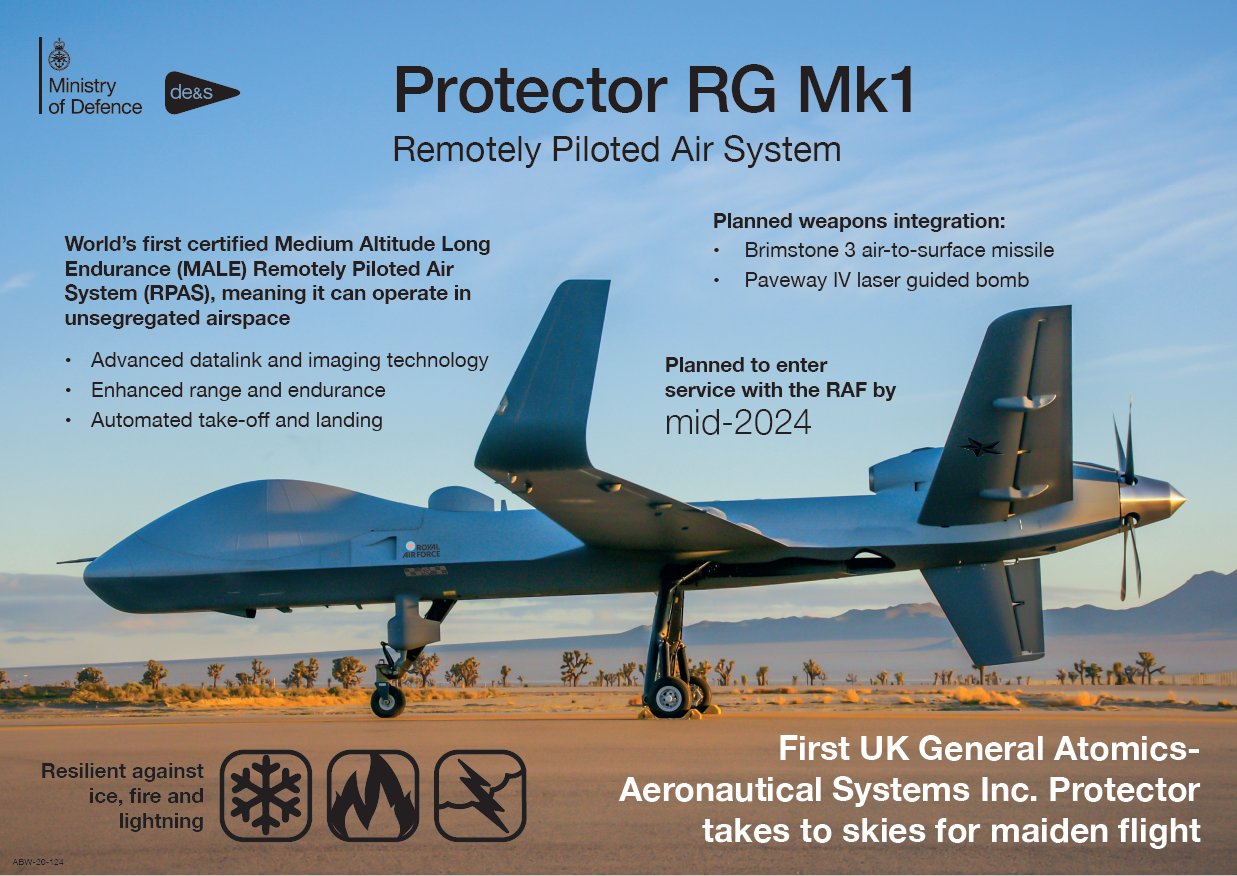
As HMS Queen Elizabeth and HMS Prince of Wales entered service, Paveway IV was also cleared for carriage
Integration onto Protector continued through 2020
Integration costs for the F-35B were reported by the MoD to be £107m in 2021
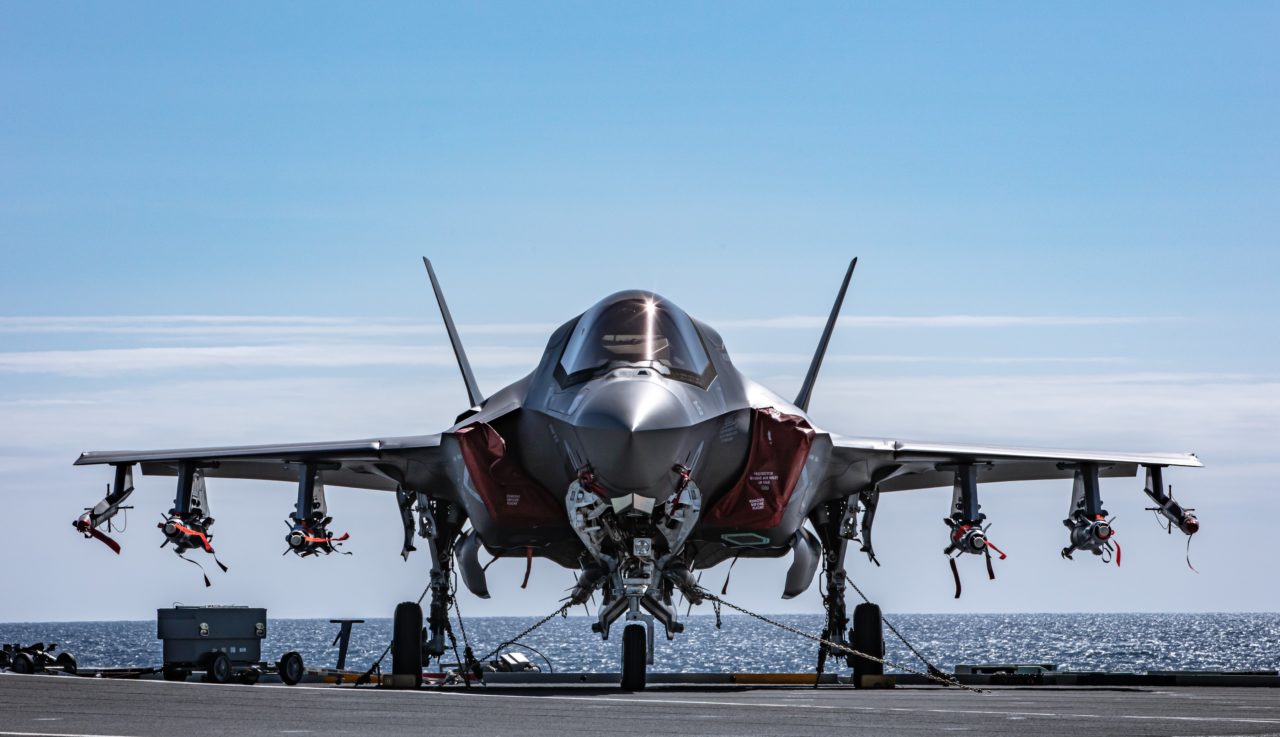
As part of ongoing support to Ukraine, the MoD announced in early 2024 that Paveway IV would be provided, and speculation followed about what launch aircraft they would use and whether any of the wing kit options would be added.
Before reading on, would you mind if I brought this to your attention?
Think Defence is a hobby, a serious hobby, but a hobby nonetheless.
I want to avoid charging for content, but hosting fees, software subscriptions and other services add up, so to help me keep the show on the road, I ask that you support the site in any way you can. It is hugely appreciated.
Advertising
You might see Google adverts depending on where you are on the site, please click one if it interests you. I know they can be annoying, but they are the one thing that returns the most.
Make a Donation
Donations can be made at a third-party site called Ko_fi.

Think Defence Merch
Everything from a Brimstone sticker to a Bailey Bridge duvet cover, pop over to the Think Defence Merchandise Store at Red Bubble.
Some might be marked as ‘mature content’ because it is a firearm!
Affiliate Links
Amazon and the occasional product link might appear in the content, you know the drill, I get a small cut if you go on to make a purchase
Paveway IV Capabilities
Paveway IV consists of four main components, a nose, tail, warhead, and a hardback (spine) that connects the three.
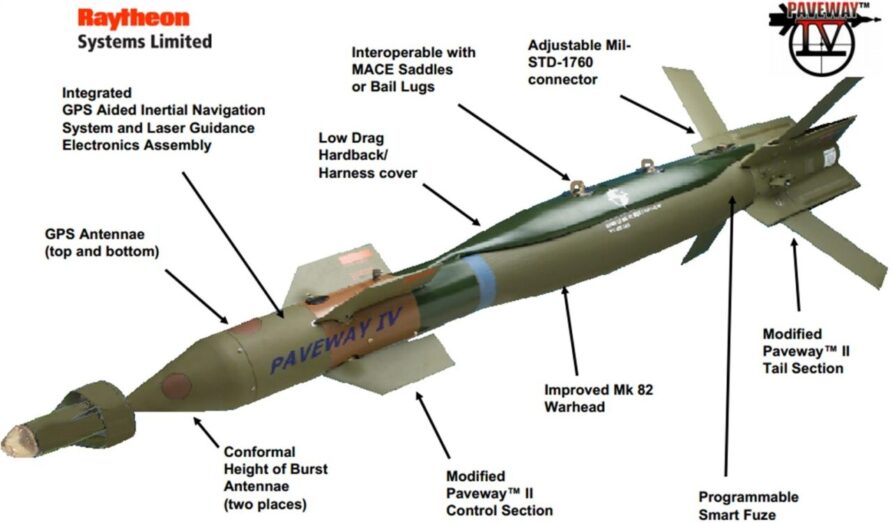
The hardback connects the tail section, warhead and guidance section, and is fitted with MACE saddles and Bail Lugs to enable carriage on multiple aircraft types.
A laser detector (birdie head), is used when laser guidance is selected. The GPS antennae are immediately behind that and also includes the GAINS (GPS Aided Inertial Navigation System) assembly and control actuators.
Laser guidance is preferred, but the weapon will revert to GPS if laser is not available in the terminal phase.
Guidance is a dual-mode system that uses both anti-jamming GPS/INS and semi-active laser (SAL). This system evolved from the RAF’s Enhanced Paveway II bomb. GPS positioning information is provided by the Selective Availability Anti-Spoofing Module (SAASM)
Paveway IV also uses a sequential arming mechanism called BWAM, Ballistic Weapon Arming Manoeuvre. This ensures multiple arming gates have to be passed through until 2 seconds before detonation. The weapon remains safe until these gates have been passed.
The Thales Aurora Multi-Event Hard Target Fuze (MEHTF) assembly is reliable and safe. Two seconds before impact it confirms with the guidance system to confirm it has been released, is on the course and is not being jammed. Without this positive confirmation, the fuze will not arm and the weapon detonates.
The fuze can air burst (at variable heights) and detonate upon impact or after impact.
The post-impact detonation mode allows the bomb to explode on the inside of buildings or buried targets, after penetrating the wall for example.
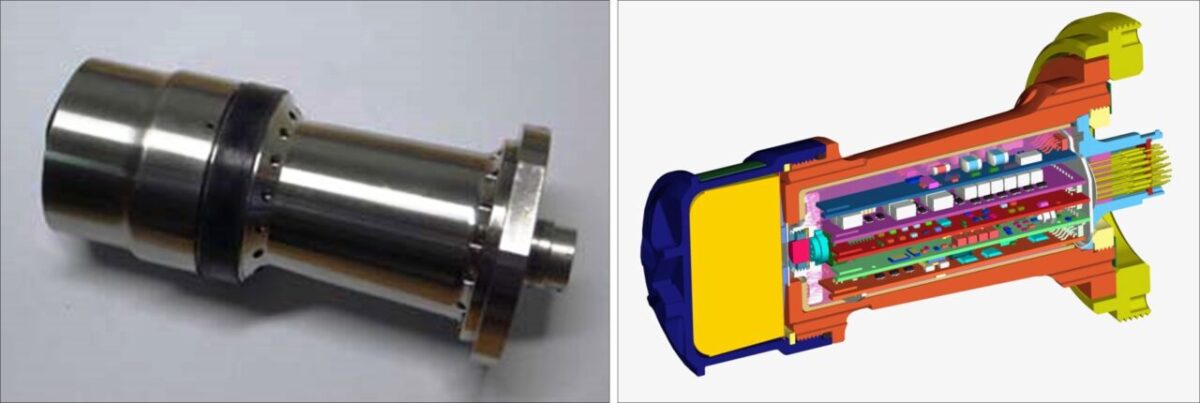
The warhead is the IM-compliant 225 kg Mk82 from Lockheed Martin, initially manufactured by Societa Esplosivi Industriali (SEI) in Italy, now Rheinmetall Italia. The fill is PBXN-109 and the assembled warhead was extensively tested for IM compliance, including fast cook-off, slow cook-off, bullet and fragmentation impacts.
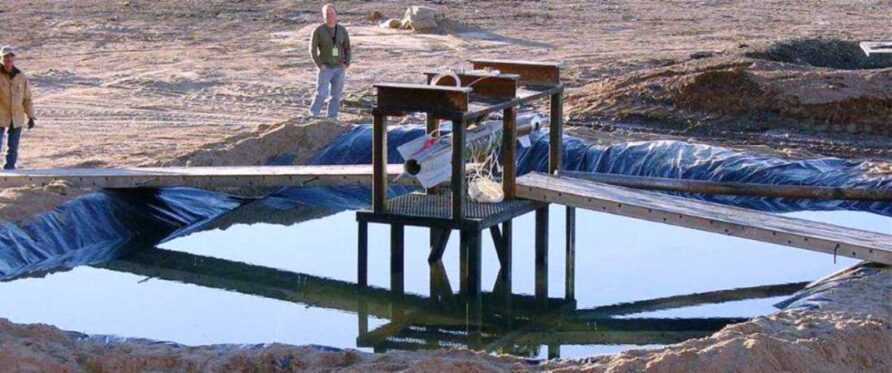
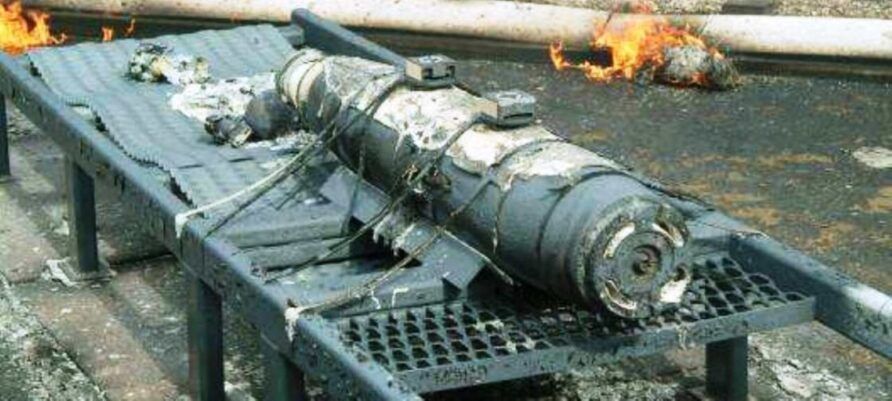
MBM Technology (now L3) provides the mechanical and electrical interface and Portsmouth Aviation, the tail unit and transport containers.
Mk2 Paveway IV has improved flight profiles and GPS accuracy.
The low collateral warhead has been tested, but the focus now seems to be on the penetrator warhead. Being able to achieve the same penetrative capability as the Enhanced Paveway III in a weapon a quarter of the size would be an impressive improvement. It uses a hardened steel penetrating rod surrounded by a discarding shroud.
In the second production lot, the existing GPS guidance unit was improved. In order for the Paveway IV to better attack moving targets, up to 70mph (ca. 113 km/h), several software improvements have been progressively implemented with trials completed in 2014. Enhanced anti-GPS jamming capability has also been developed.
A wing was always envisaged as part of the development path of Paveway IV, although it does not appear to be of a high priority at the minute. One of the original options was a Leigh Aerosystems/Lockheed Martin Long Shot wing kit, but there are other options available now.
The RAF also has in service the Enhanced Paveway III Dual Mode Laser-guided Bomb (BLU-109 penetrating warhead).
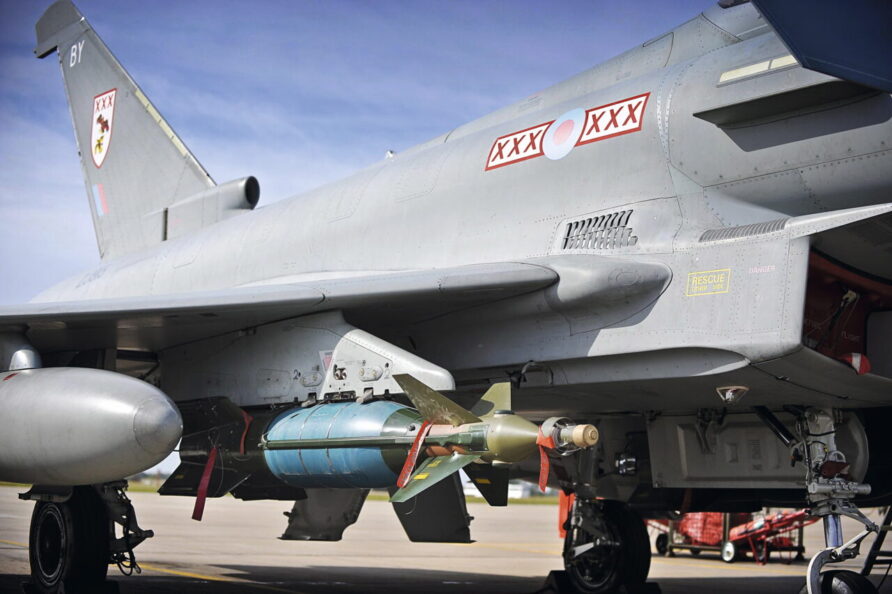
This is a larger weapon (1,130 kg) that is used infrequently and combines GPS, inertial and laser guidance. EPW III was recently used by a Tornado GR.4 in the operation against ISIS, the video below shows a pair of them being used against an underground bunker complex
Enhanced Paveway III
Paveway III
The smaller Enhanced Paveway II, weighing in at 545 kg, is also in service, although the Paveway IV is to replace it.
Paveway II and Enhanced Paveway II were cleared for Tornado and Typhoon
Enhanced Paveway III was only cleared for Tornado only.
A multi-store launcher was developed to allow two Paveway IV’s (or three Brimstone) to be carried per store’s pylon. This will enable the Typhoon to carry 12 Paveway IV whilst still retaining a full air-air missile load.
This has yet to be implemented due to other funding priorities.
The latest variant is the Mk3, with several selected improvements and component changes.
Change Status
| Change Date | Change Record |
| 01/05/2016 | Initial issue |
| 28/07/2021 | Update and format refresh |
| 20/11/2022 | Image updates |
| 05/05/2024 | Minor updates |
Discover more from Think Defence
Subscribe to get the latest posts sent to your email.


